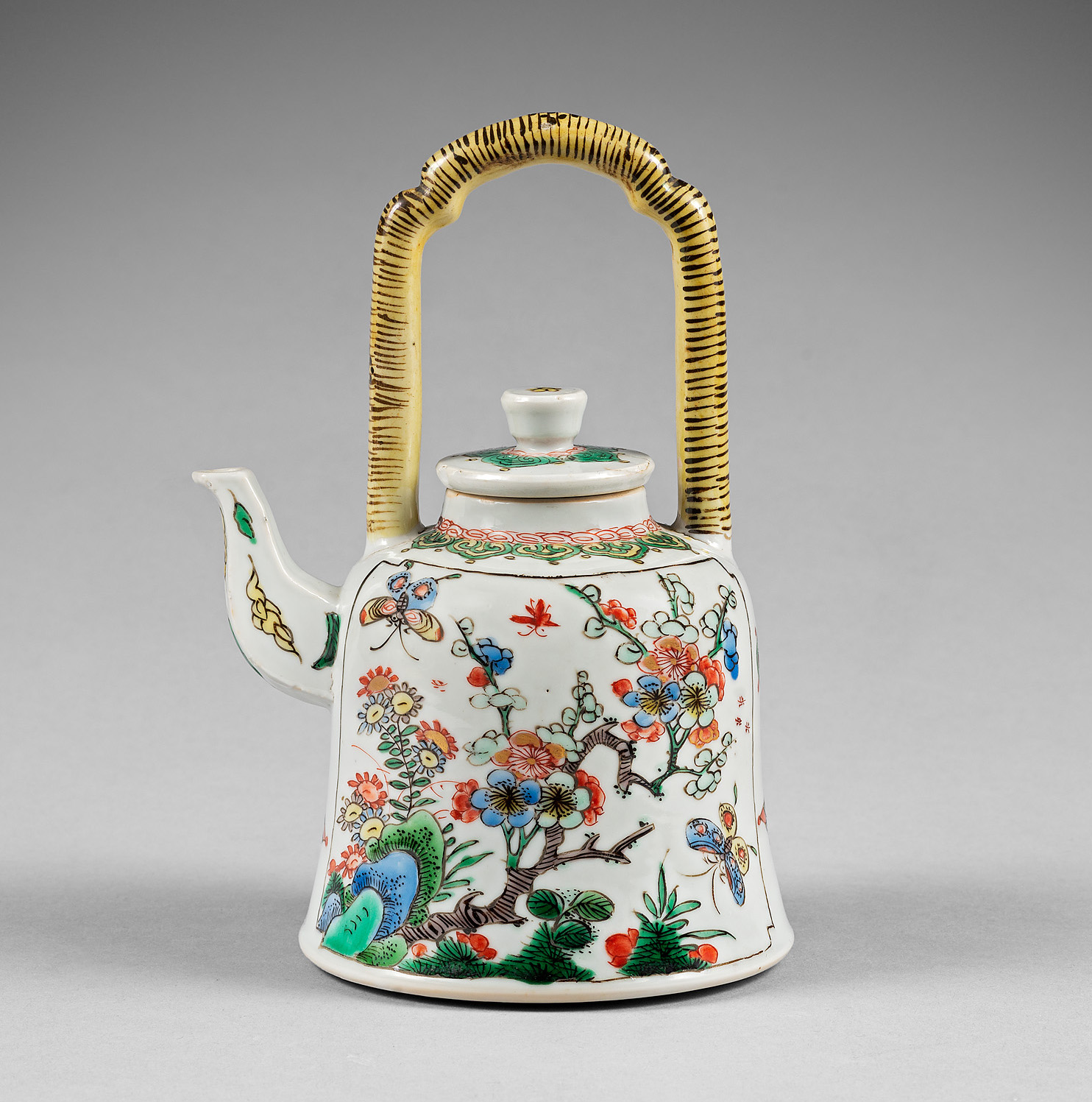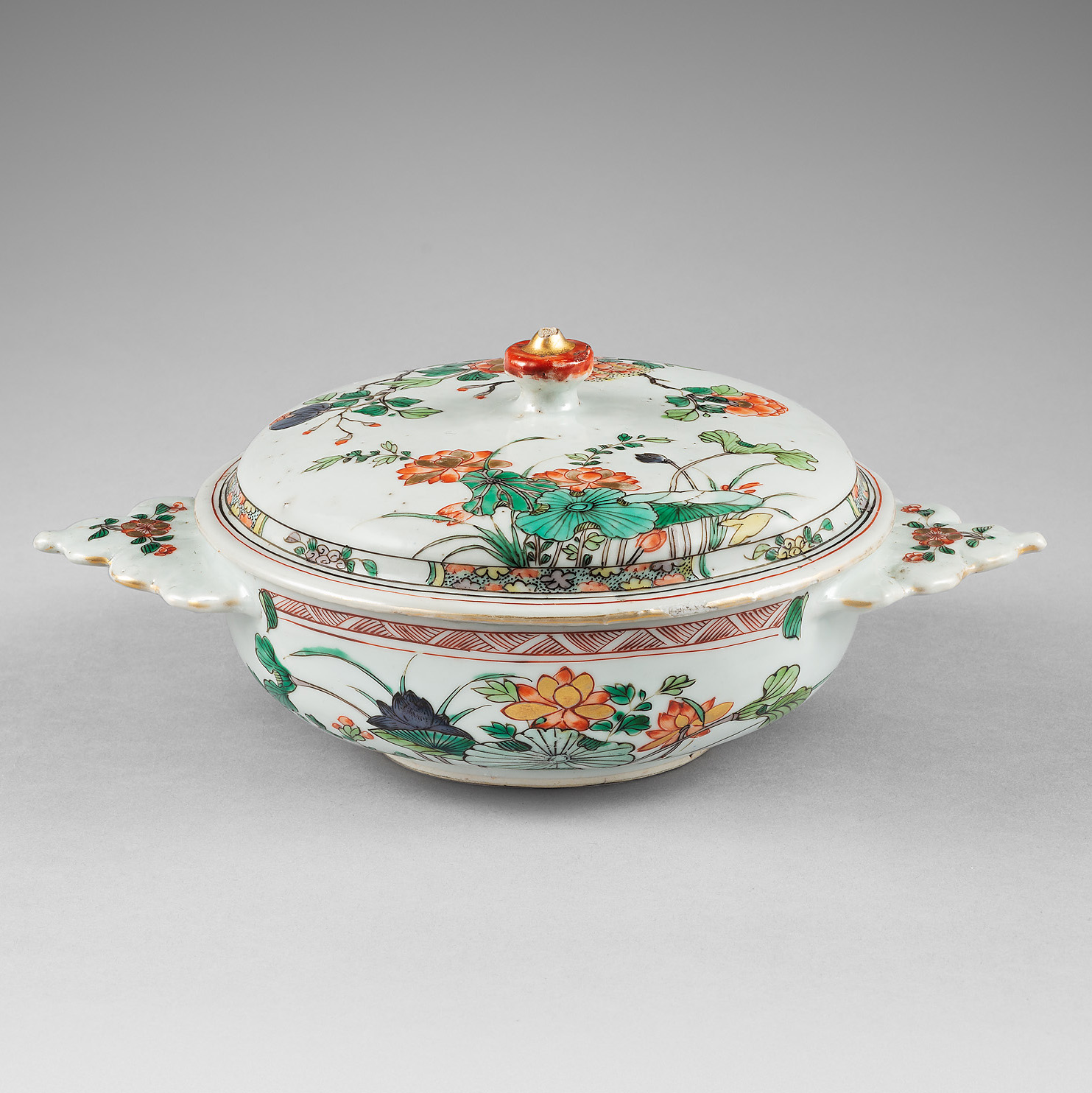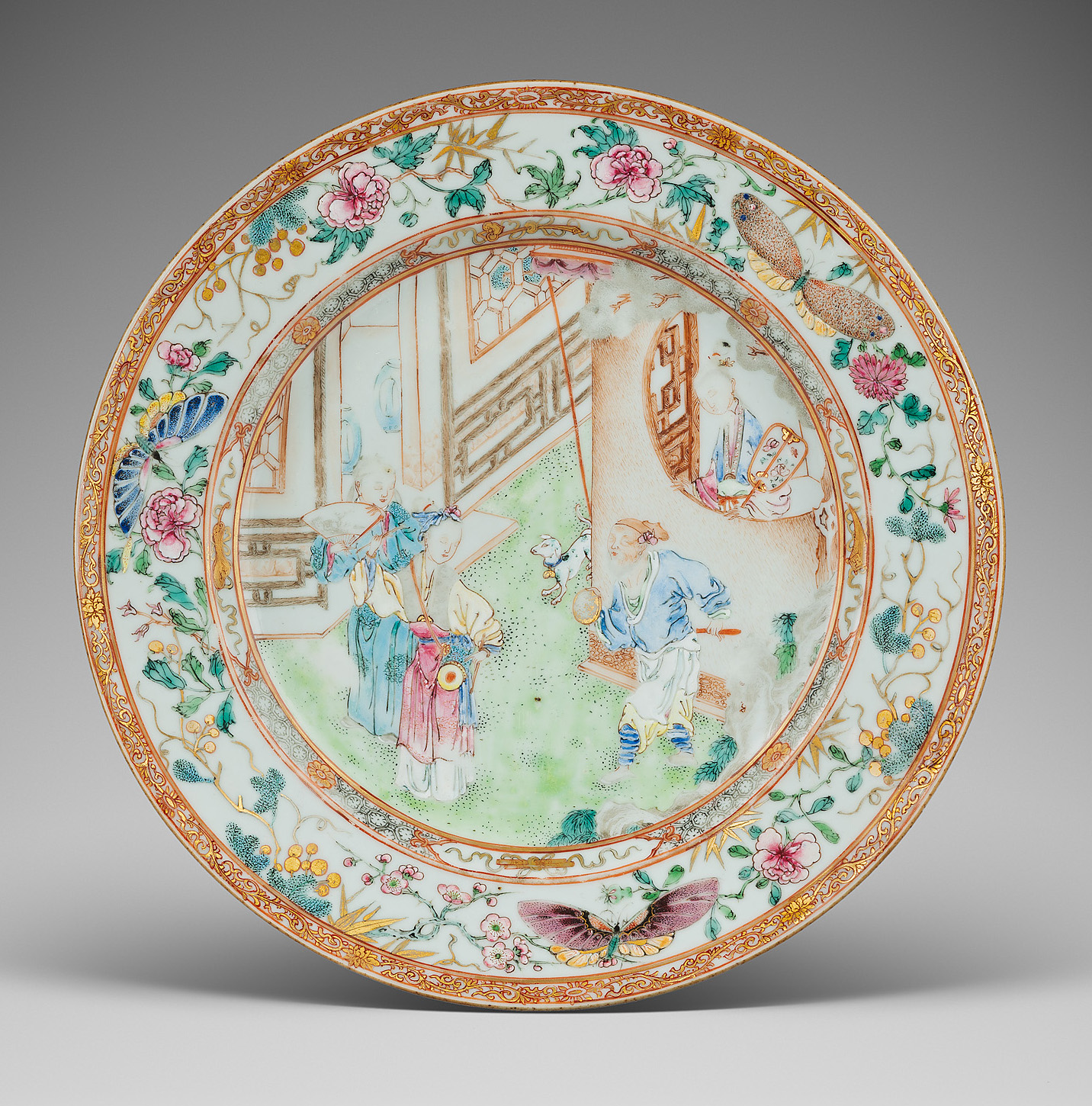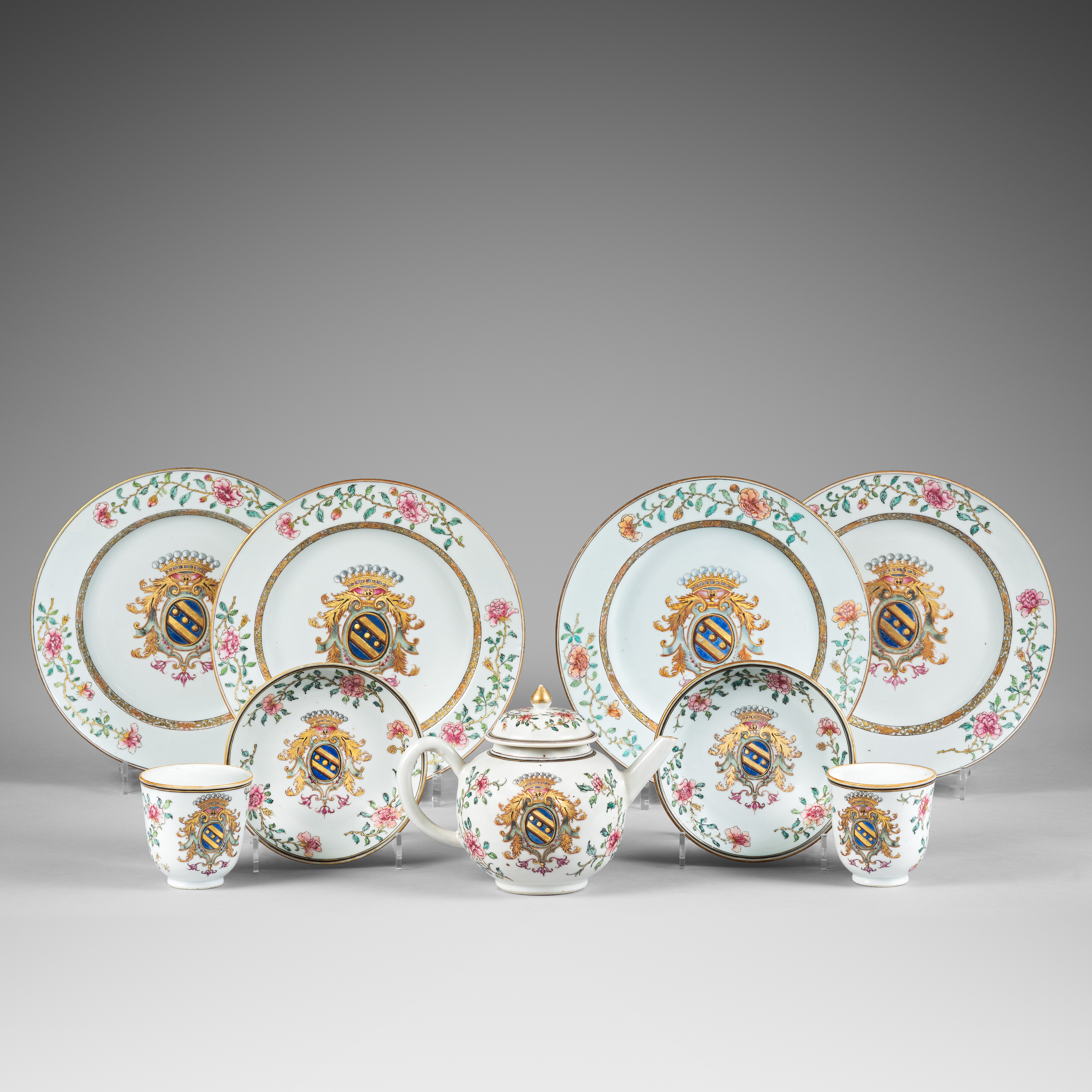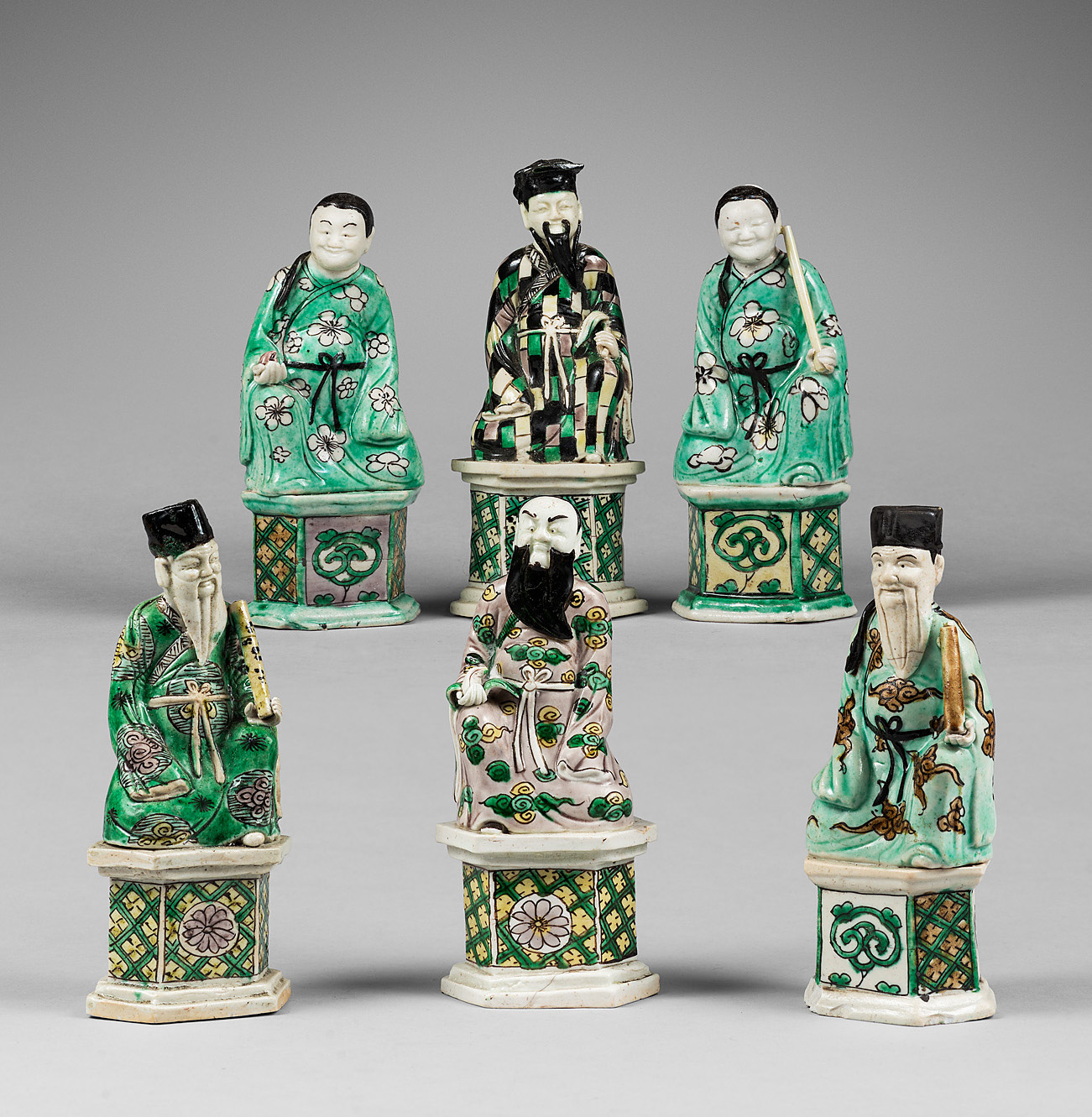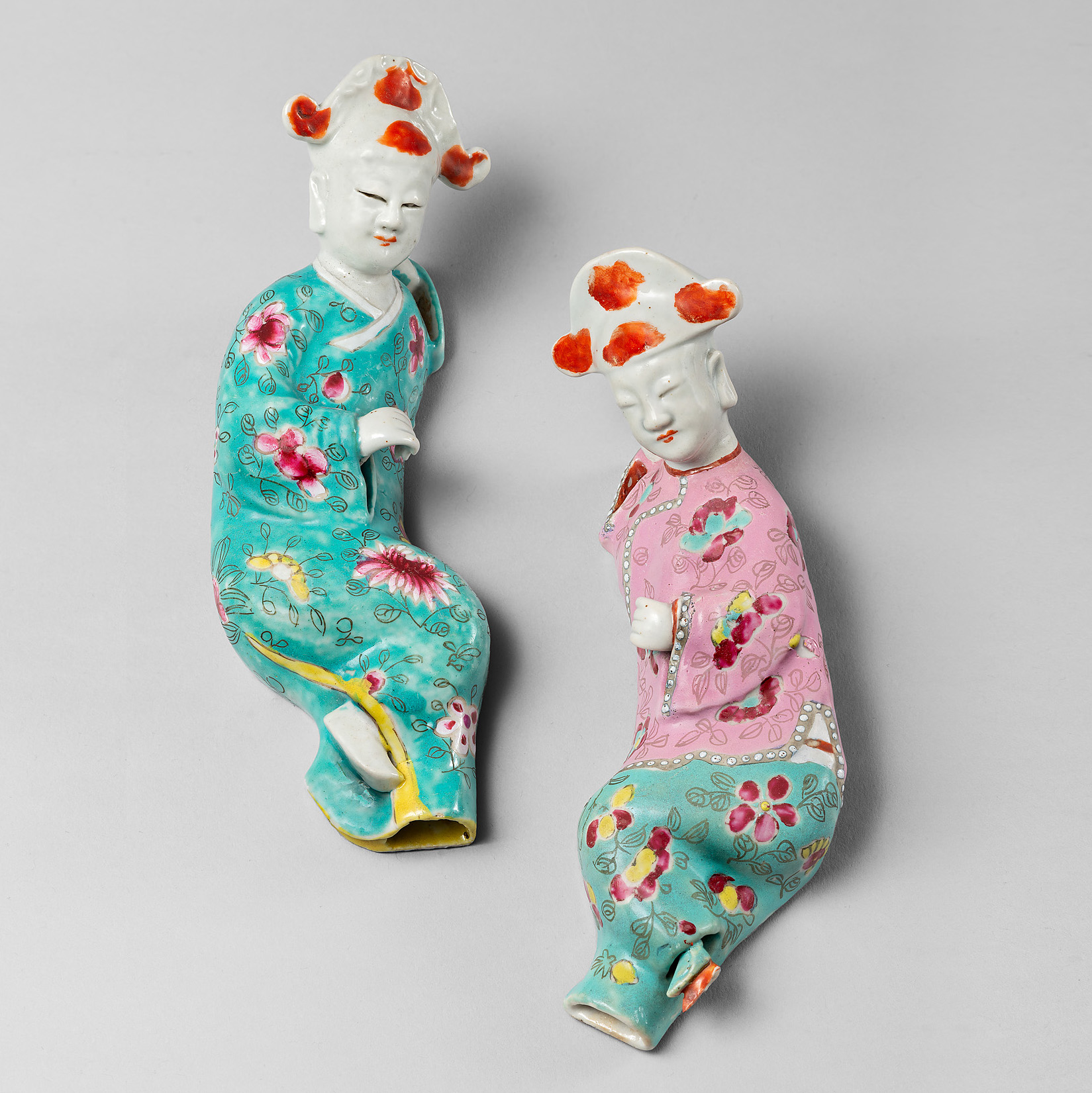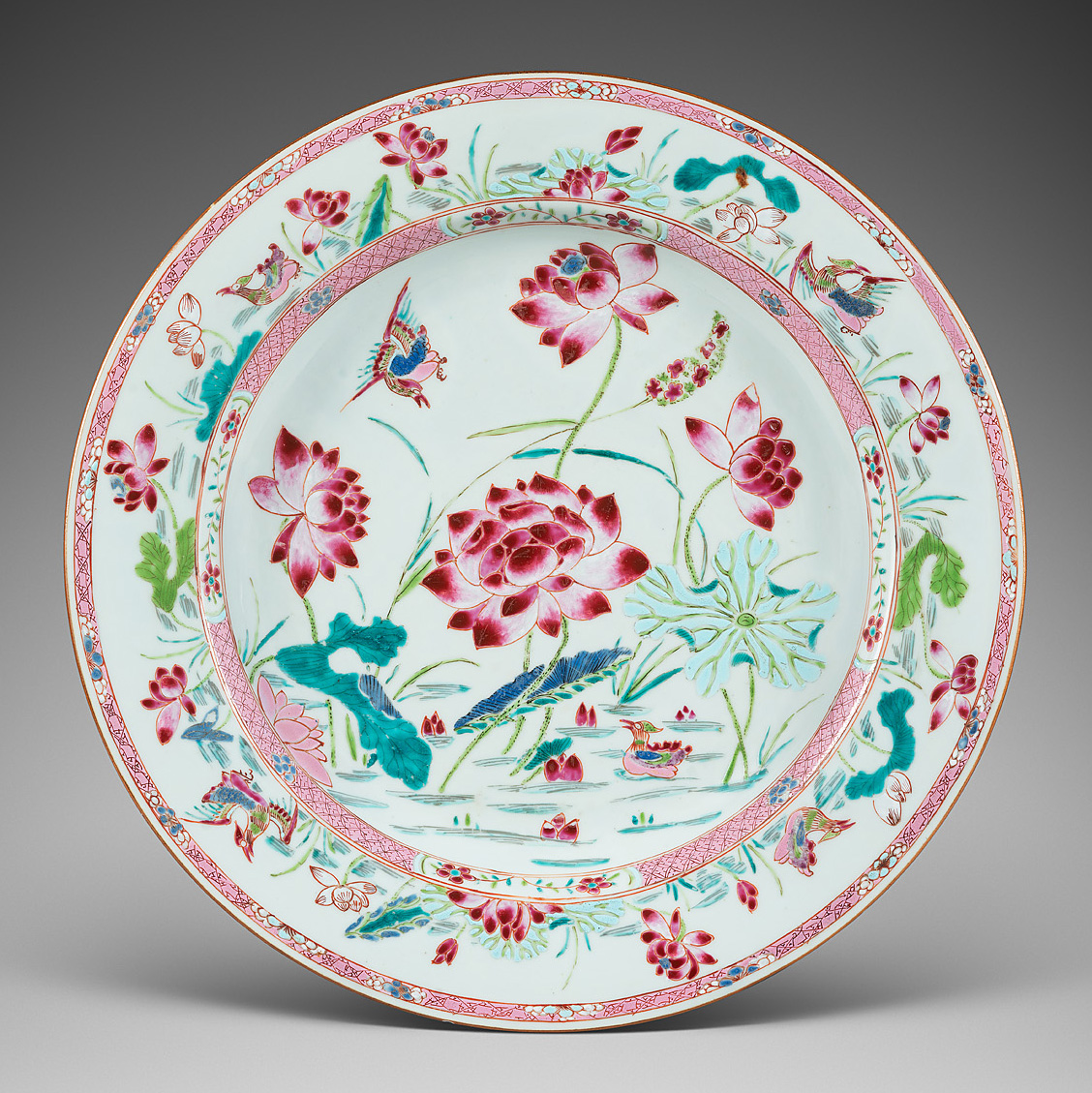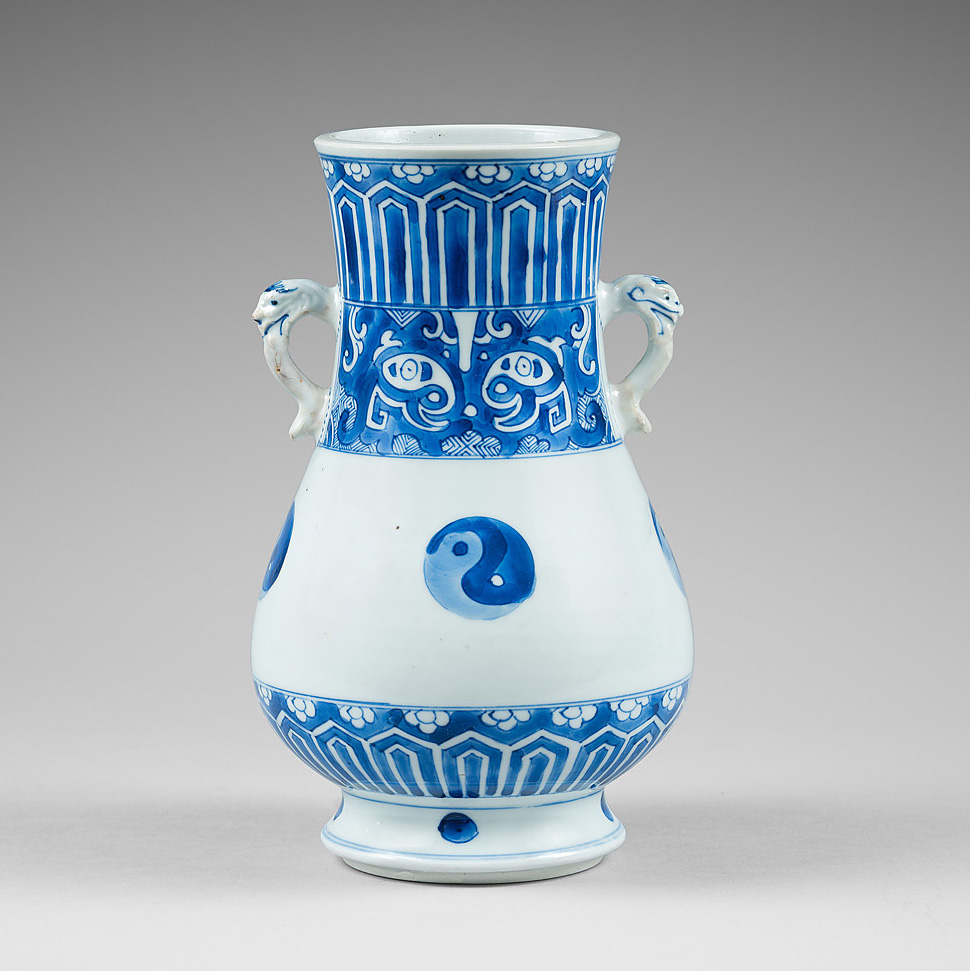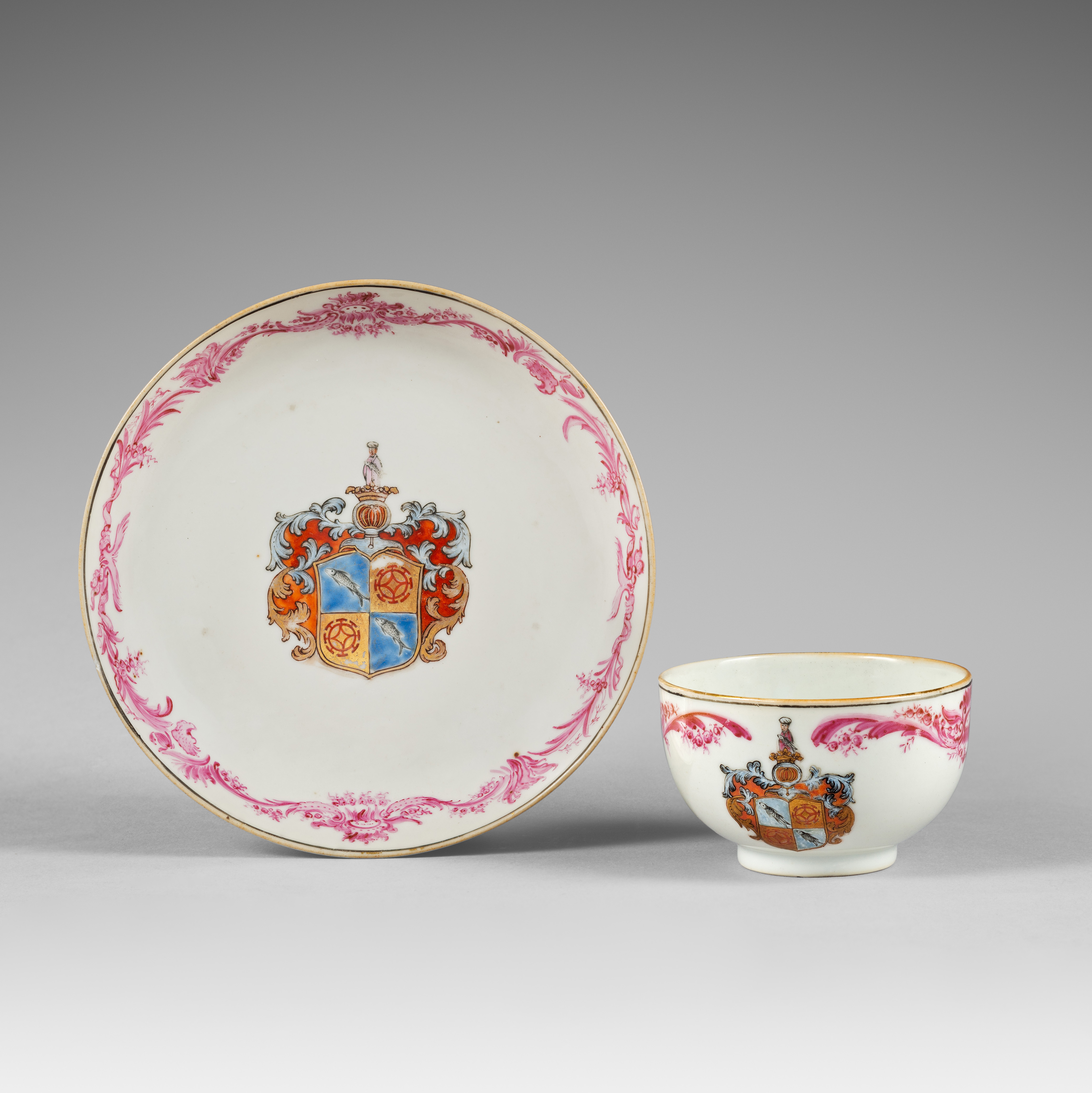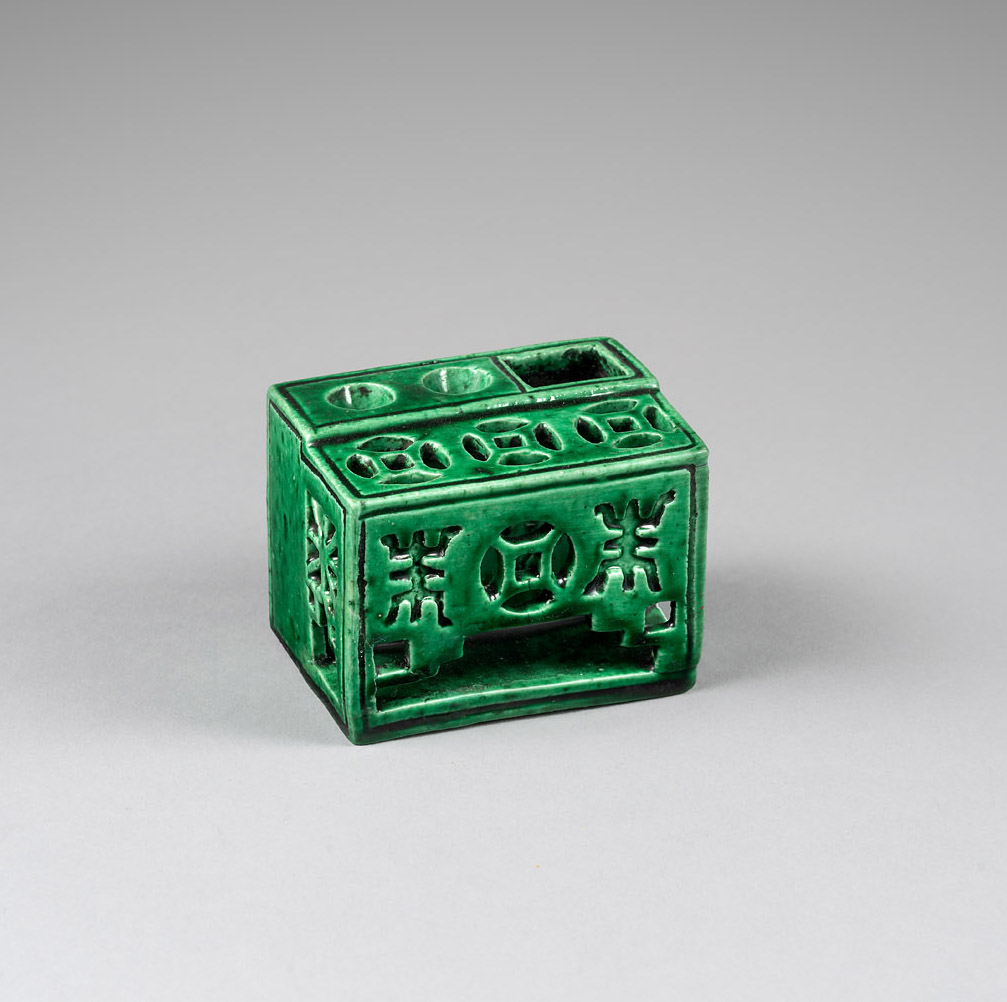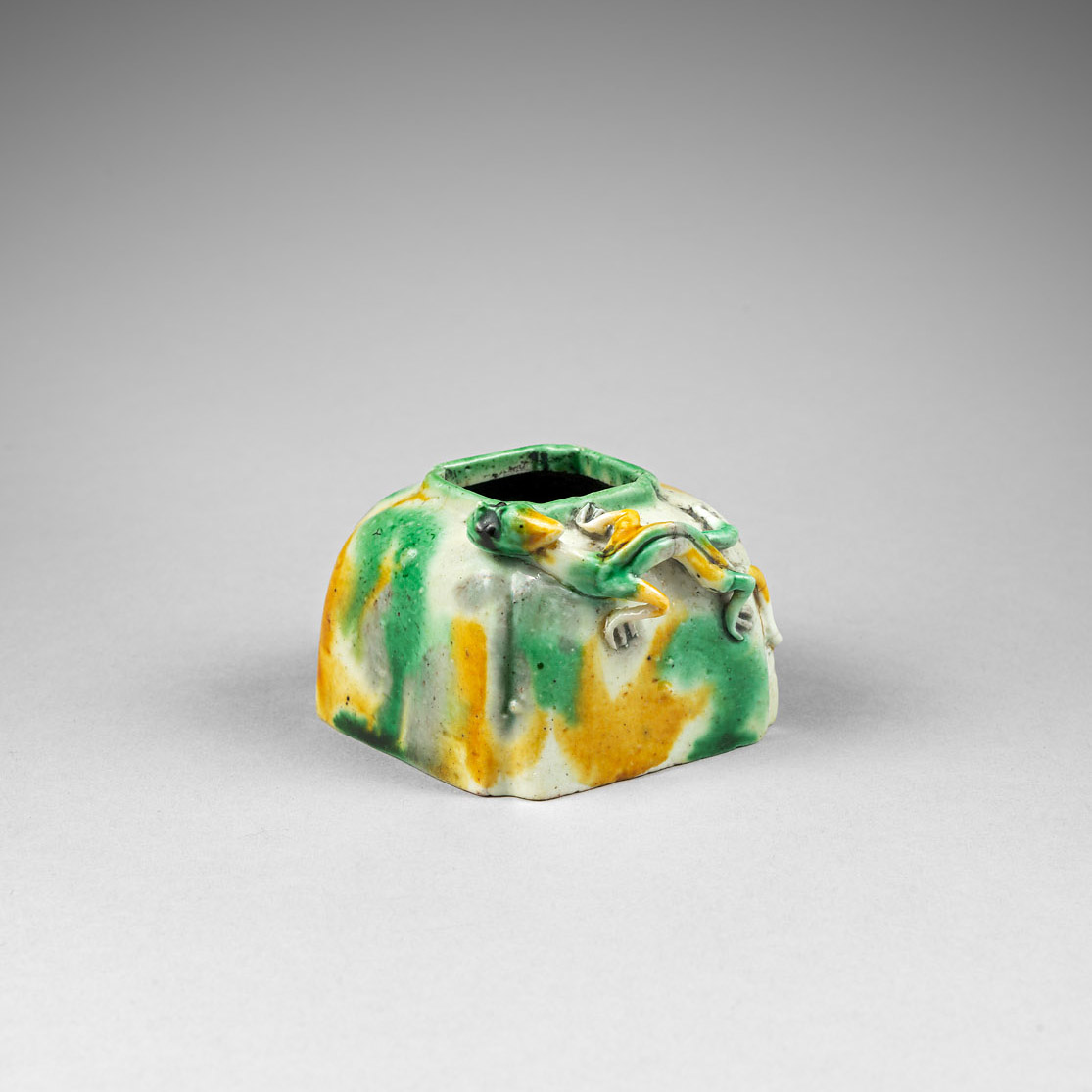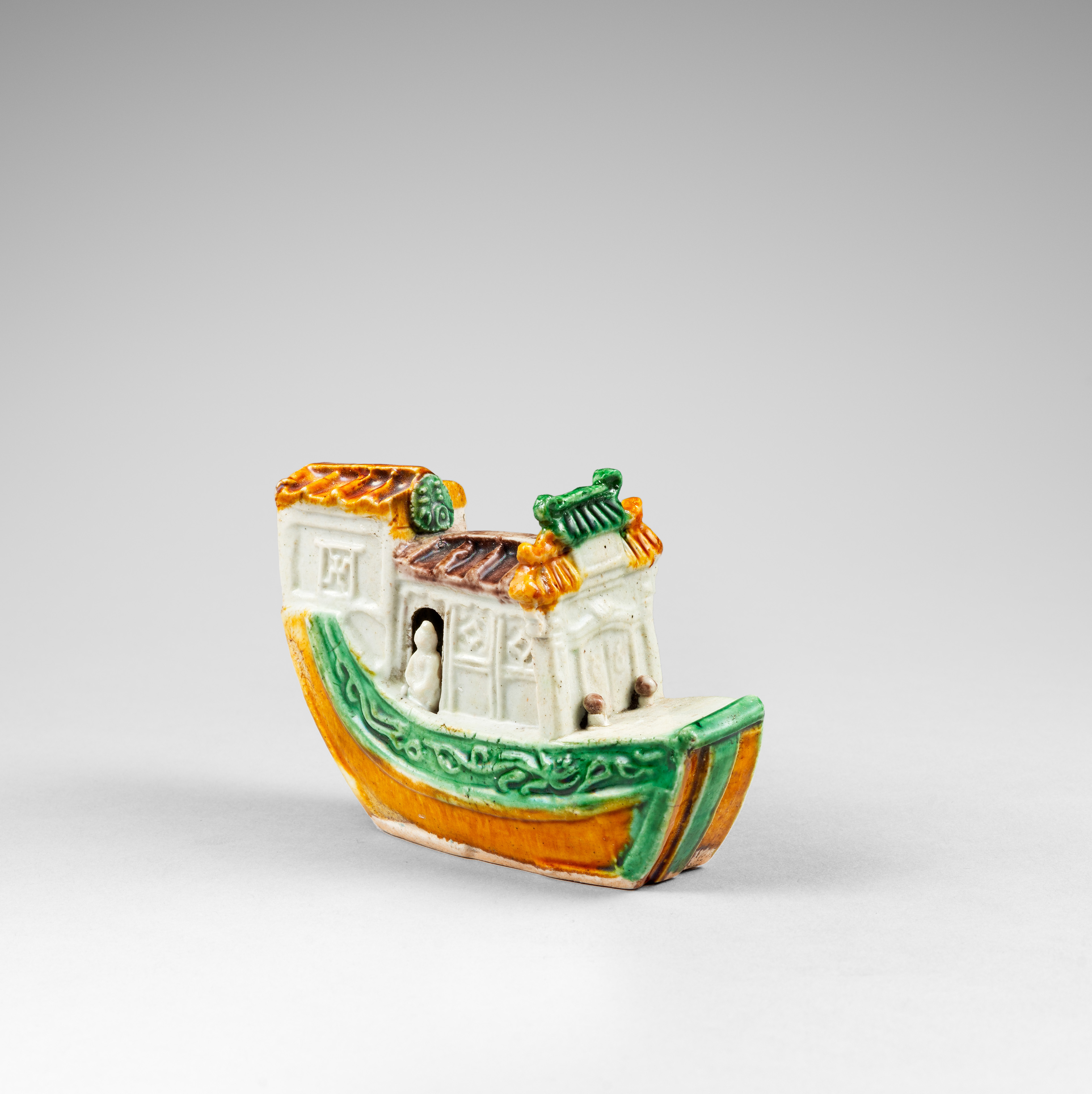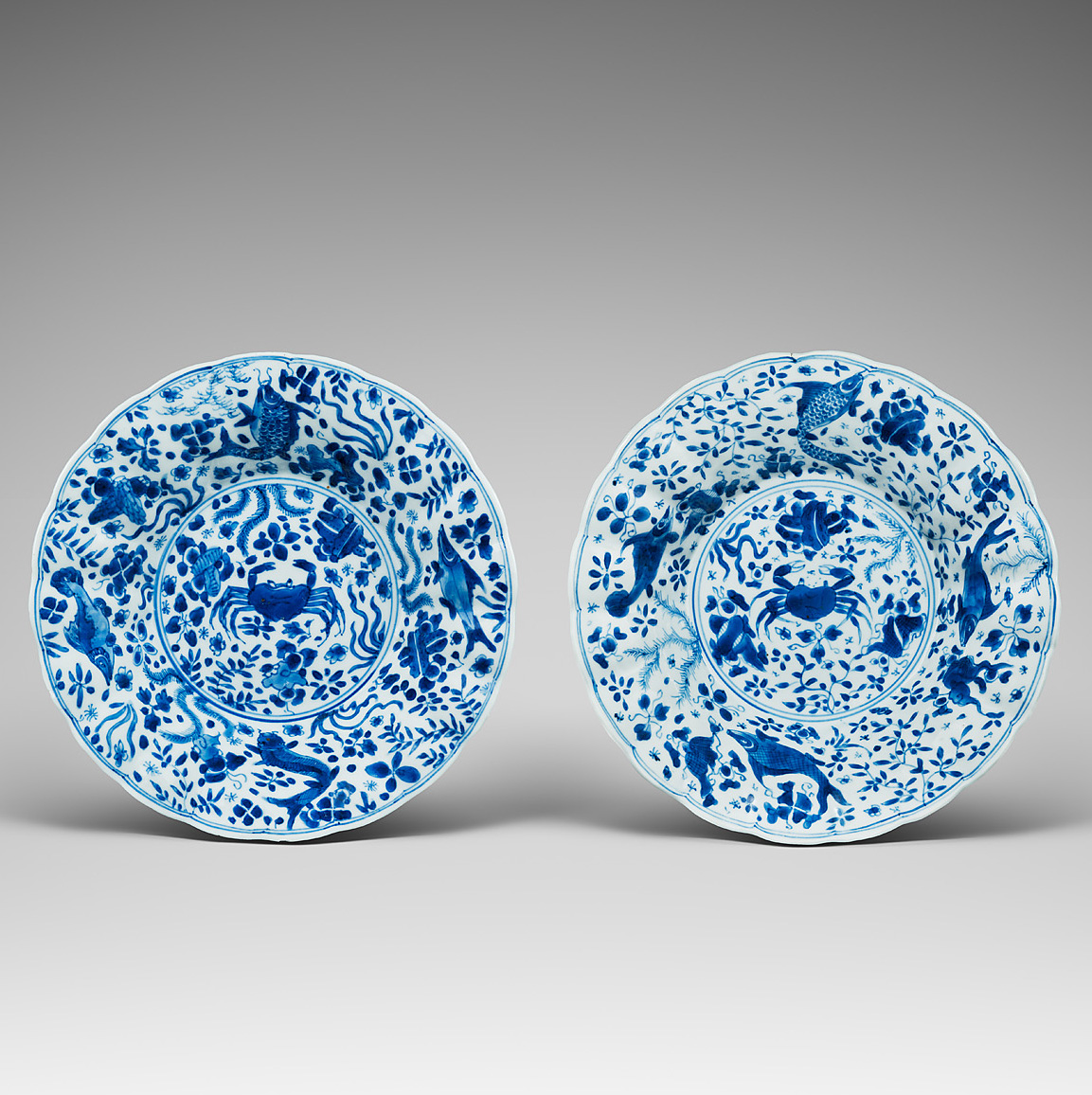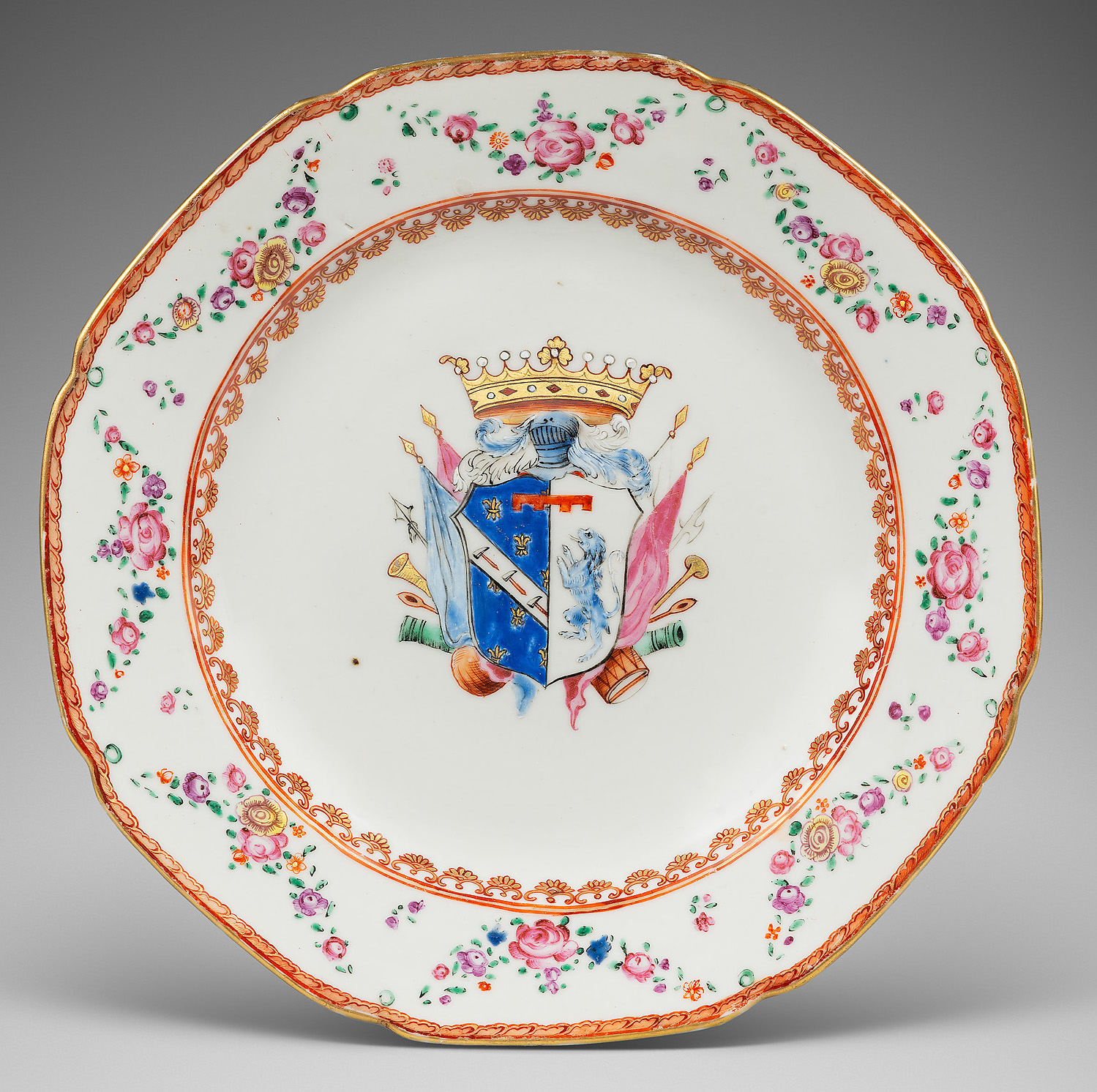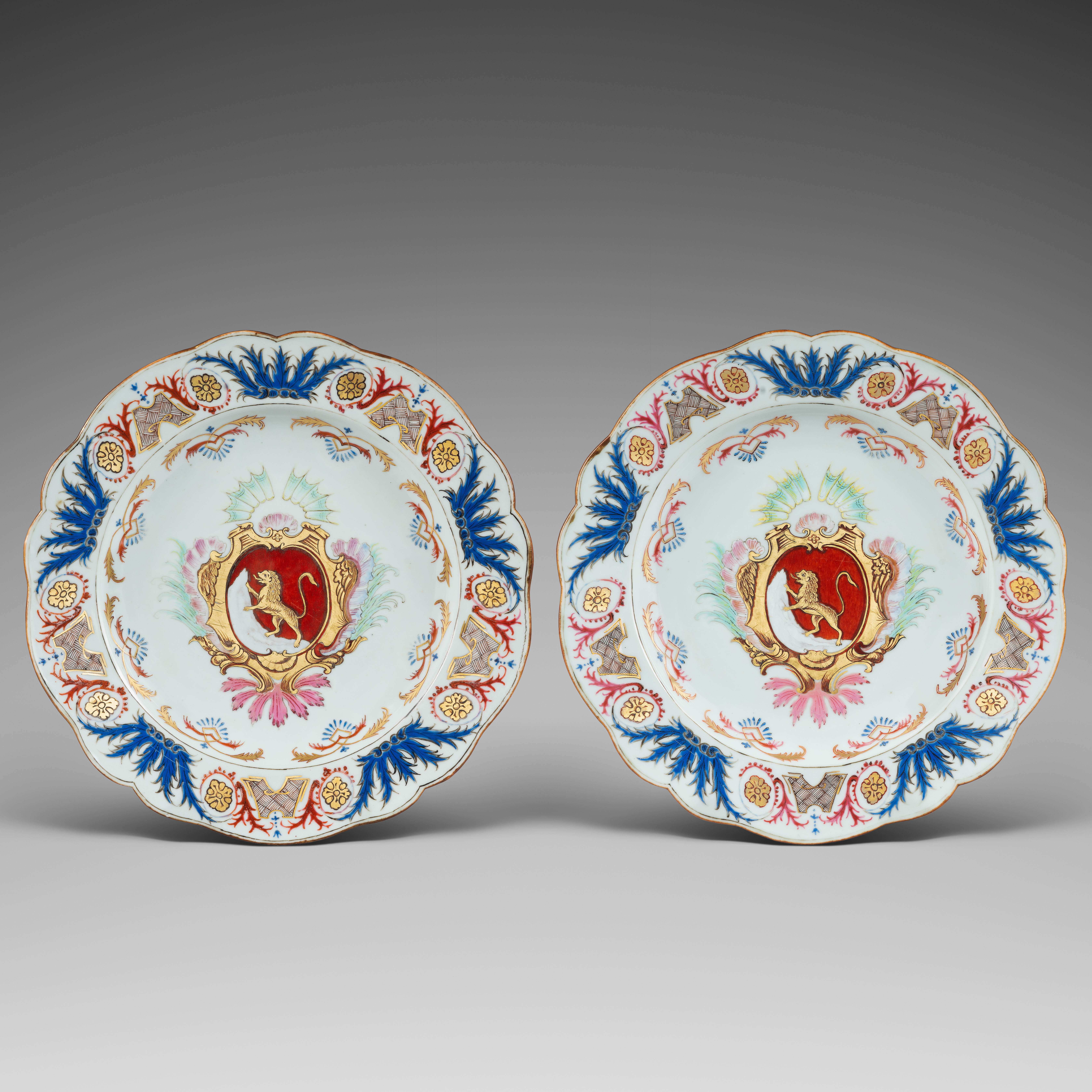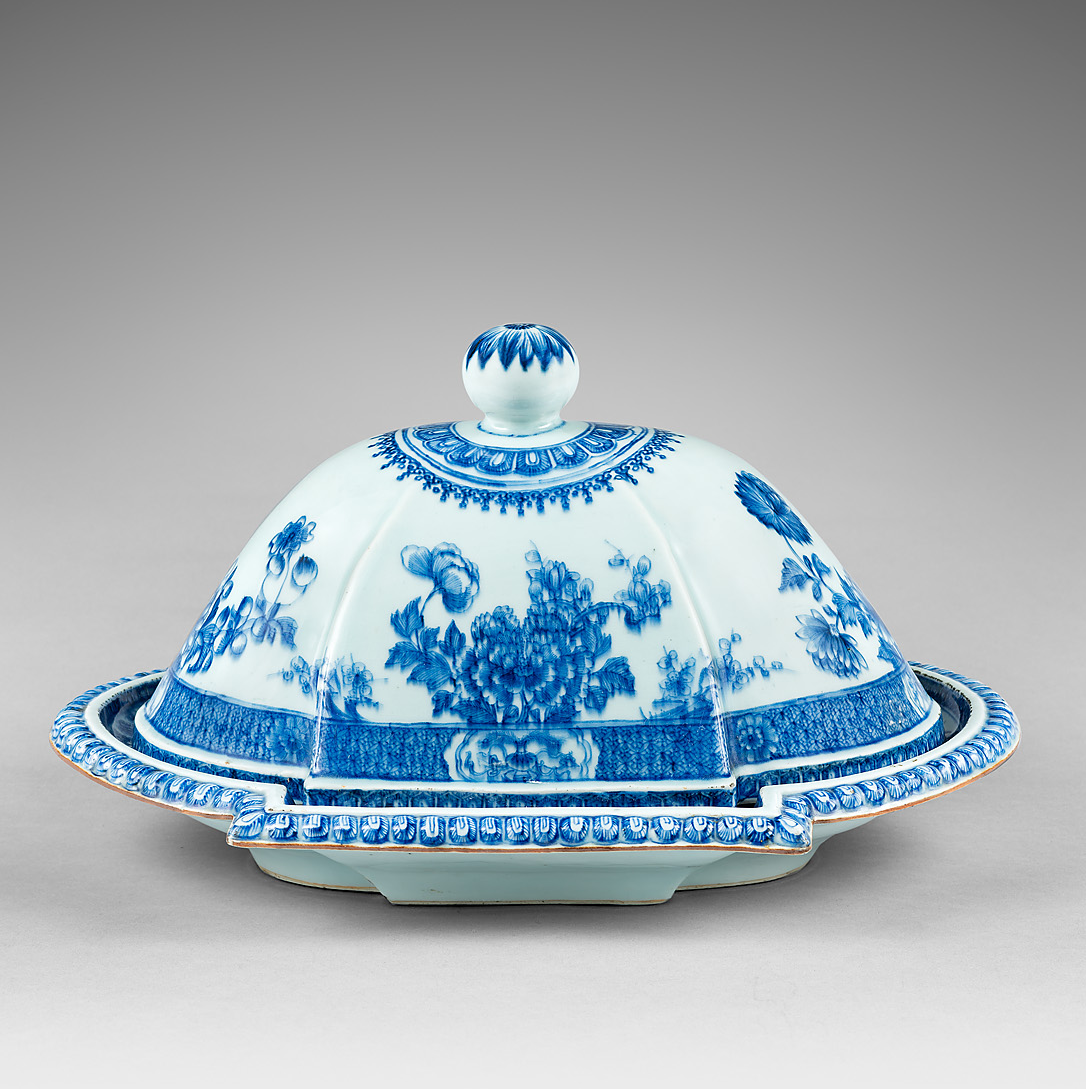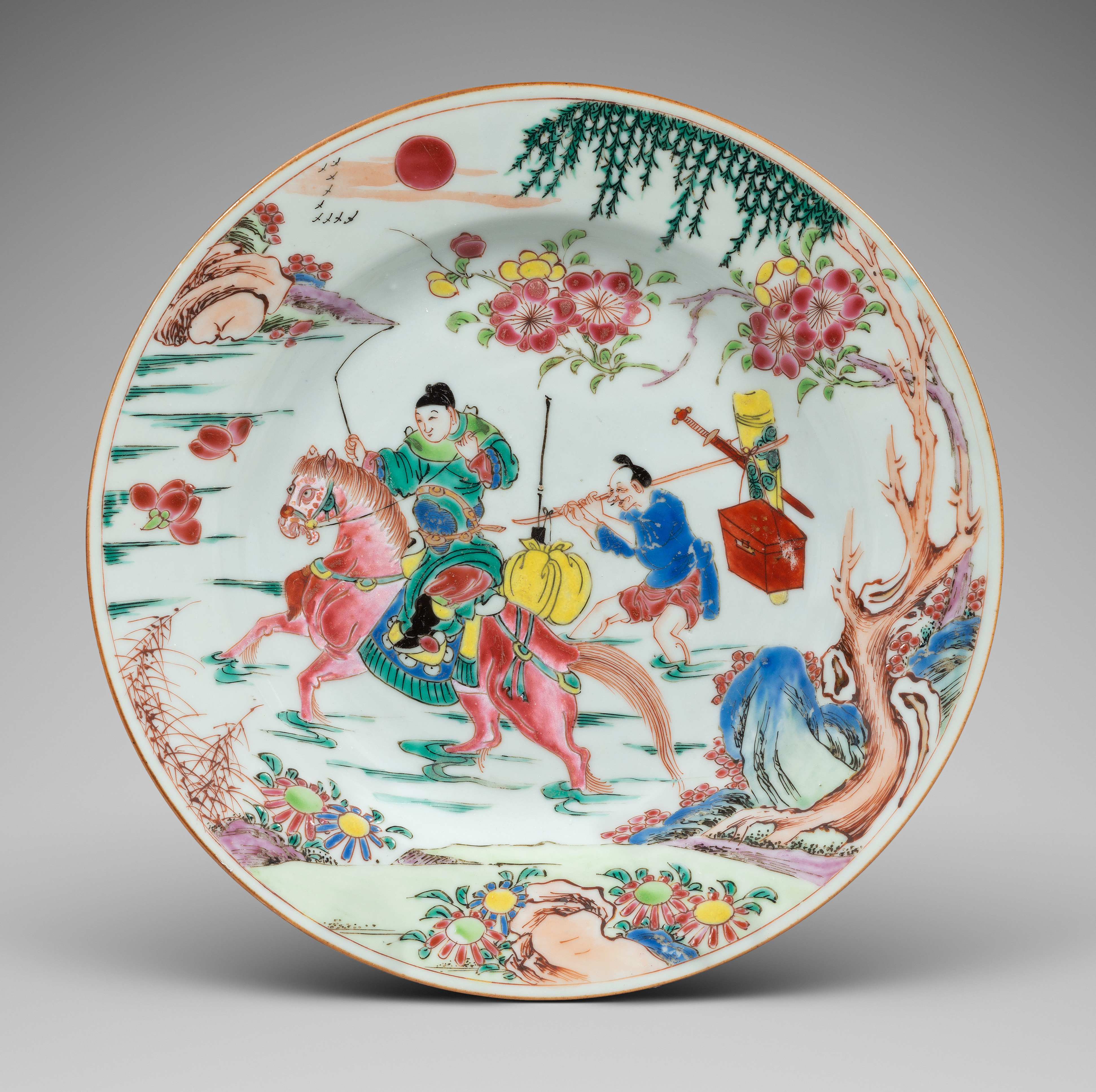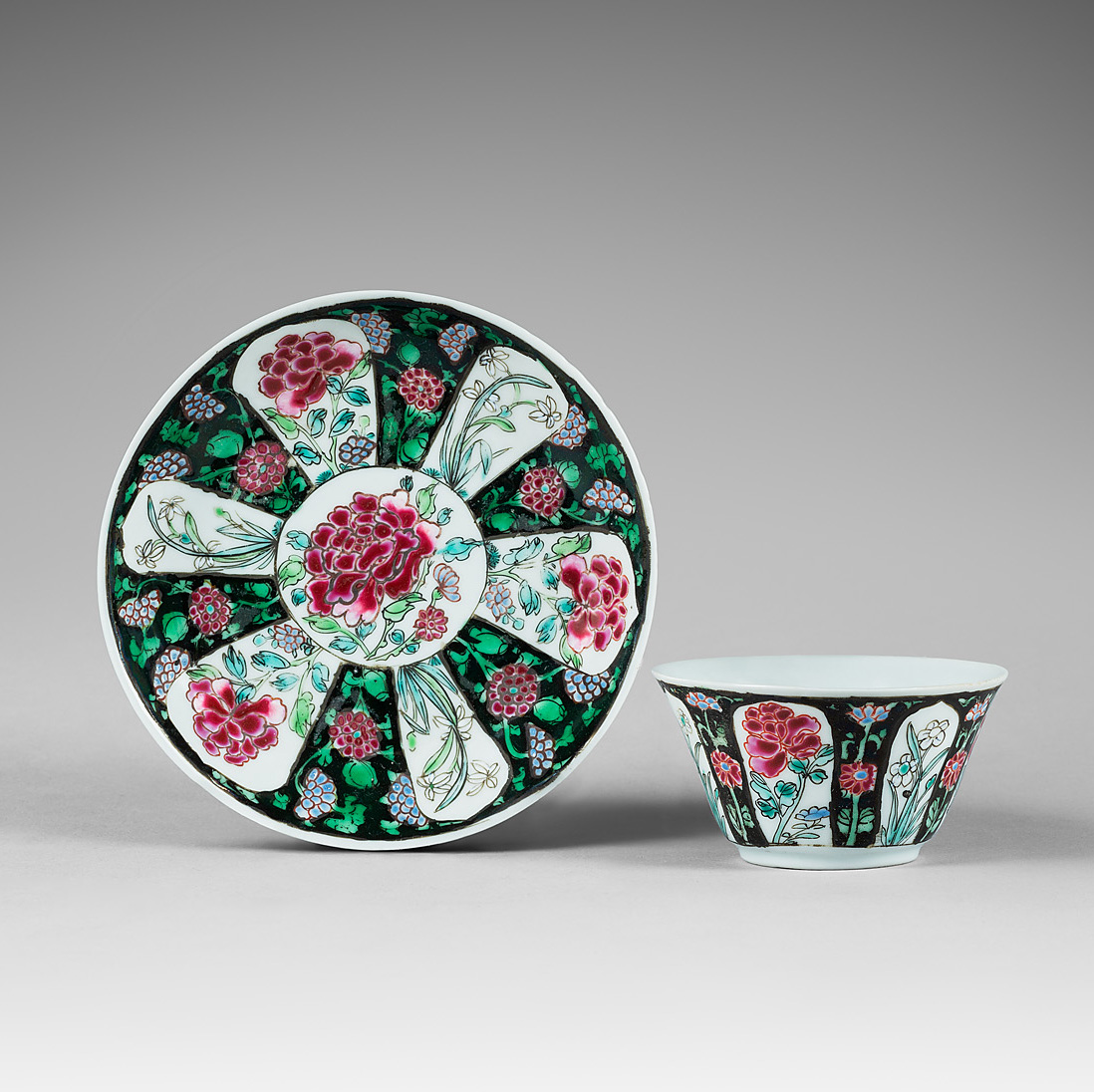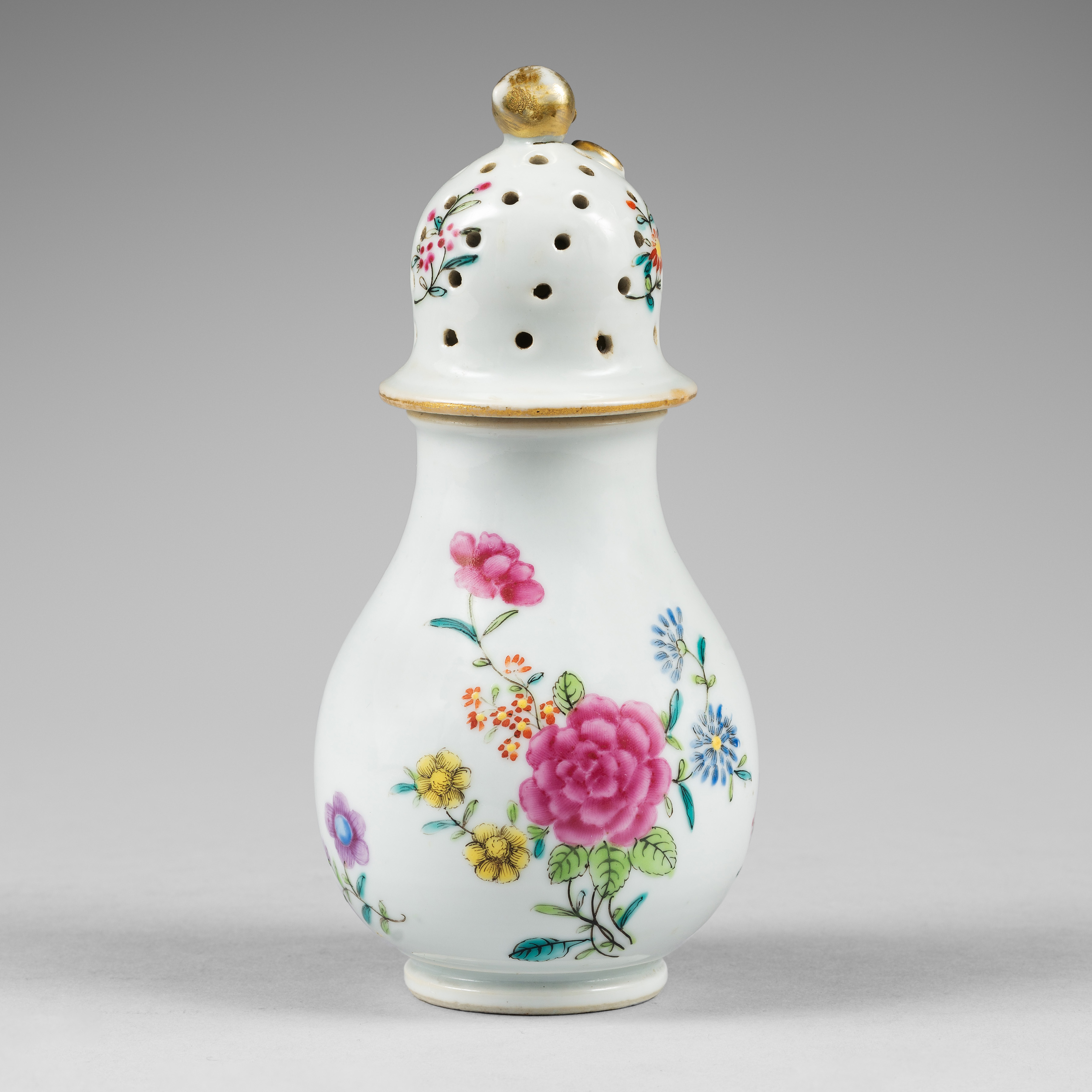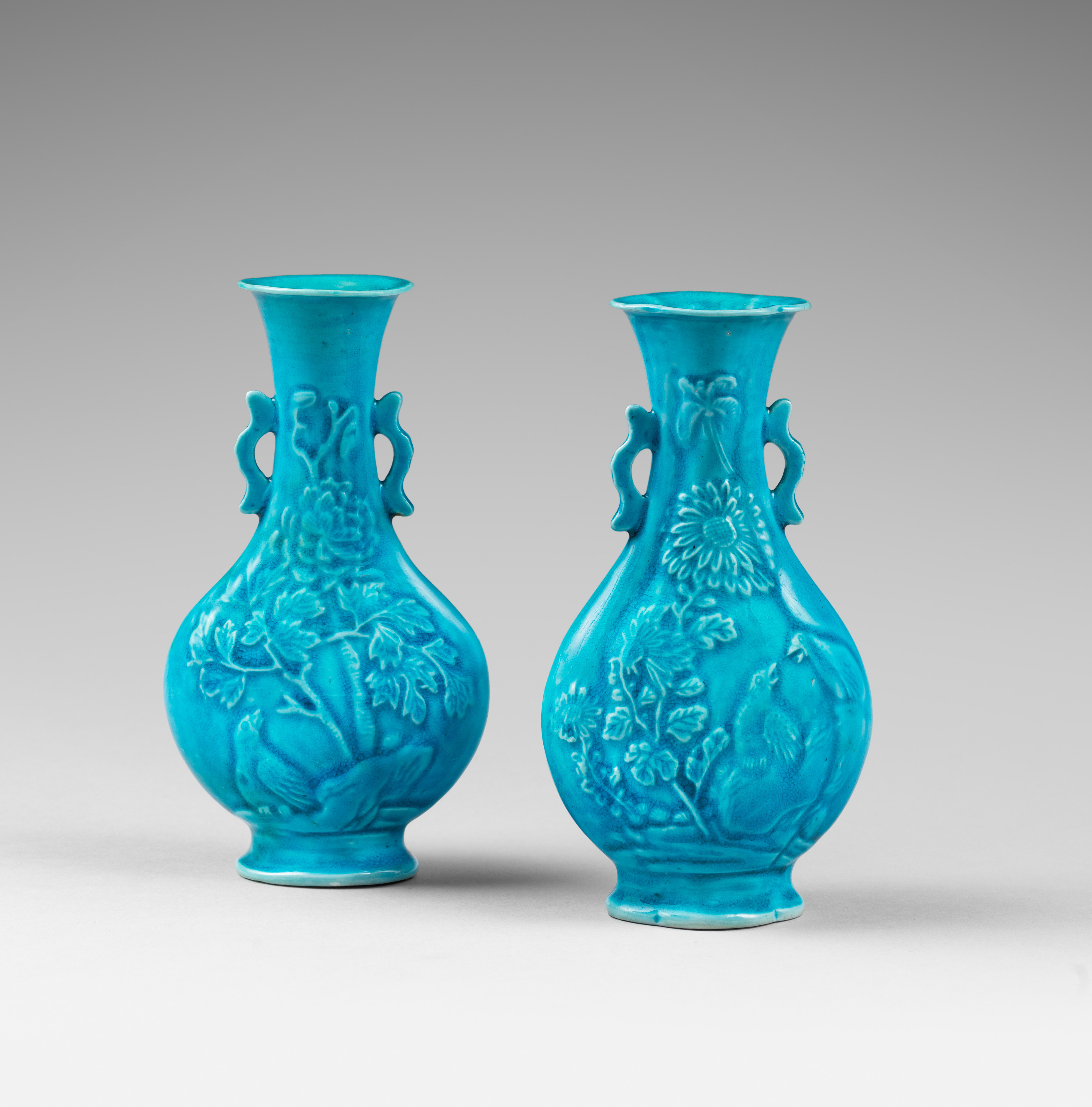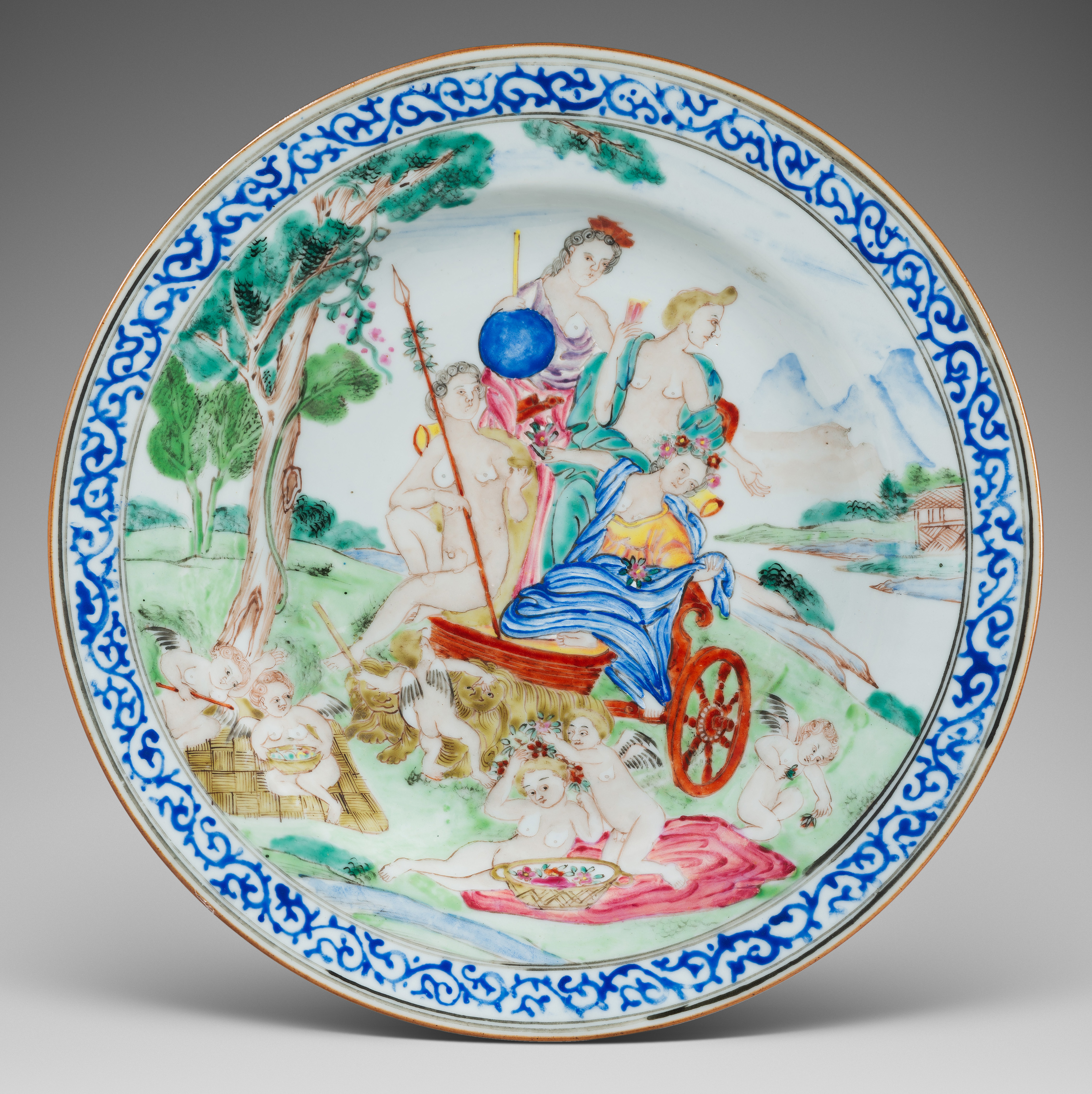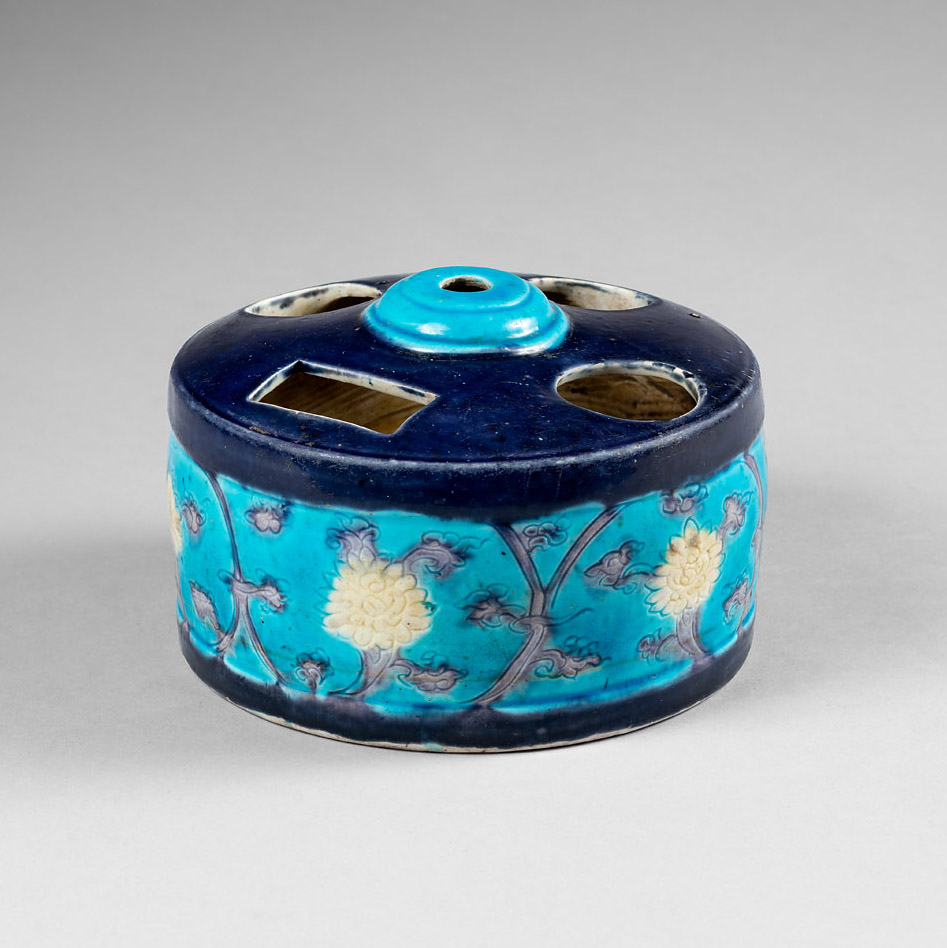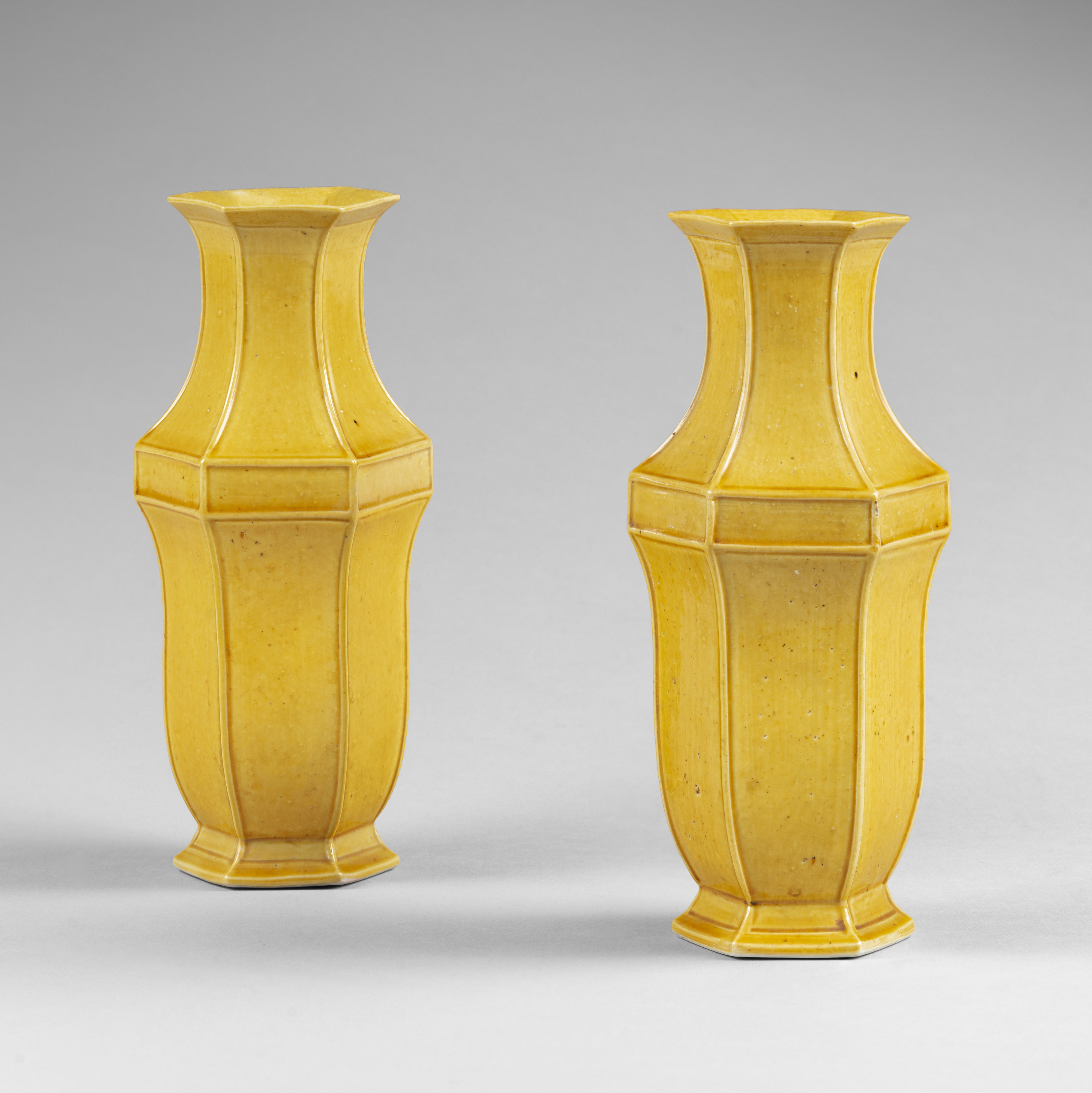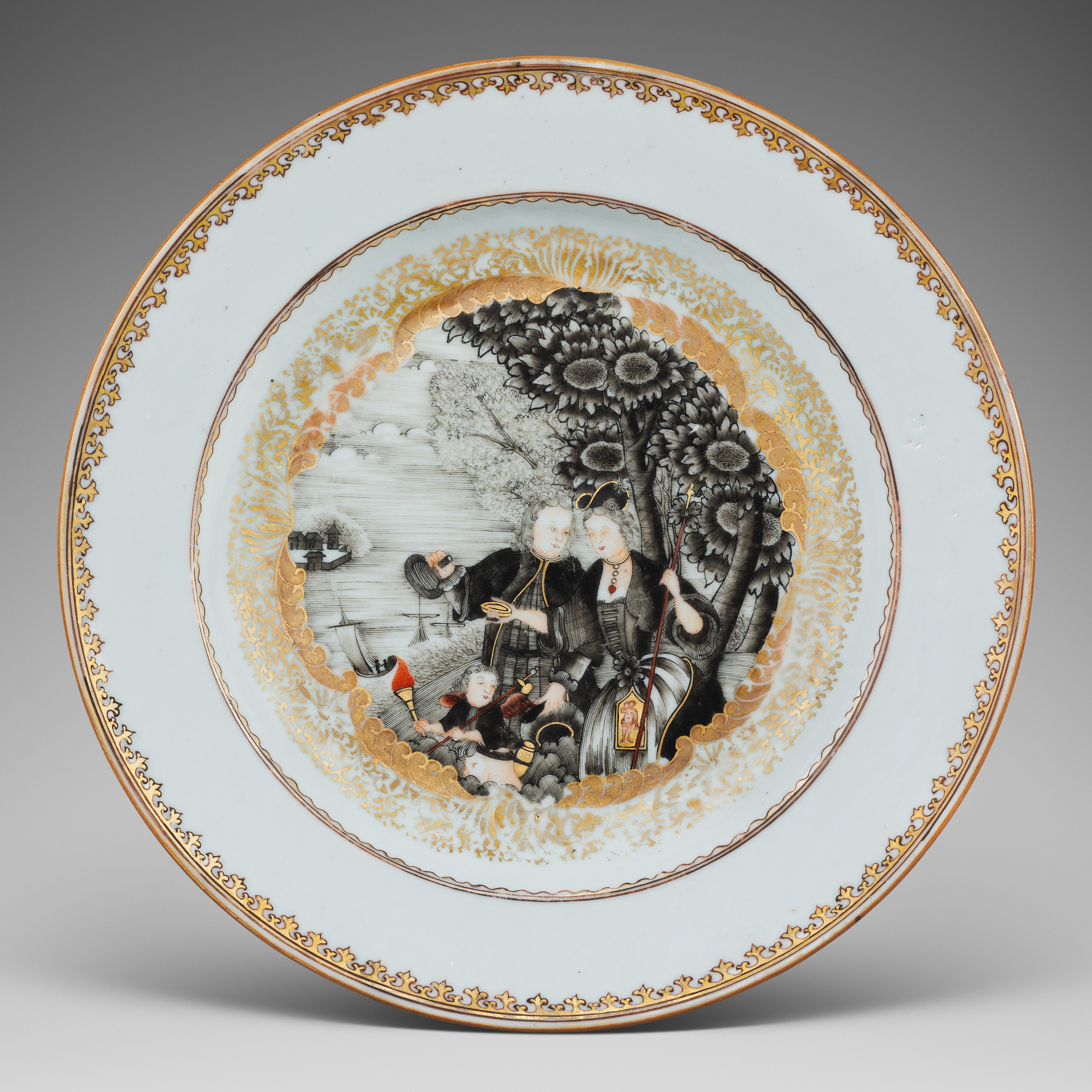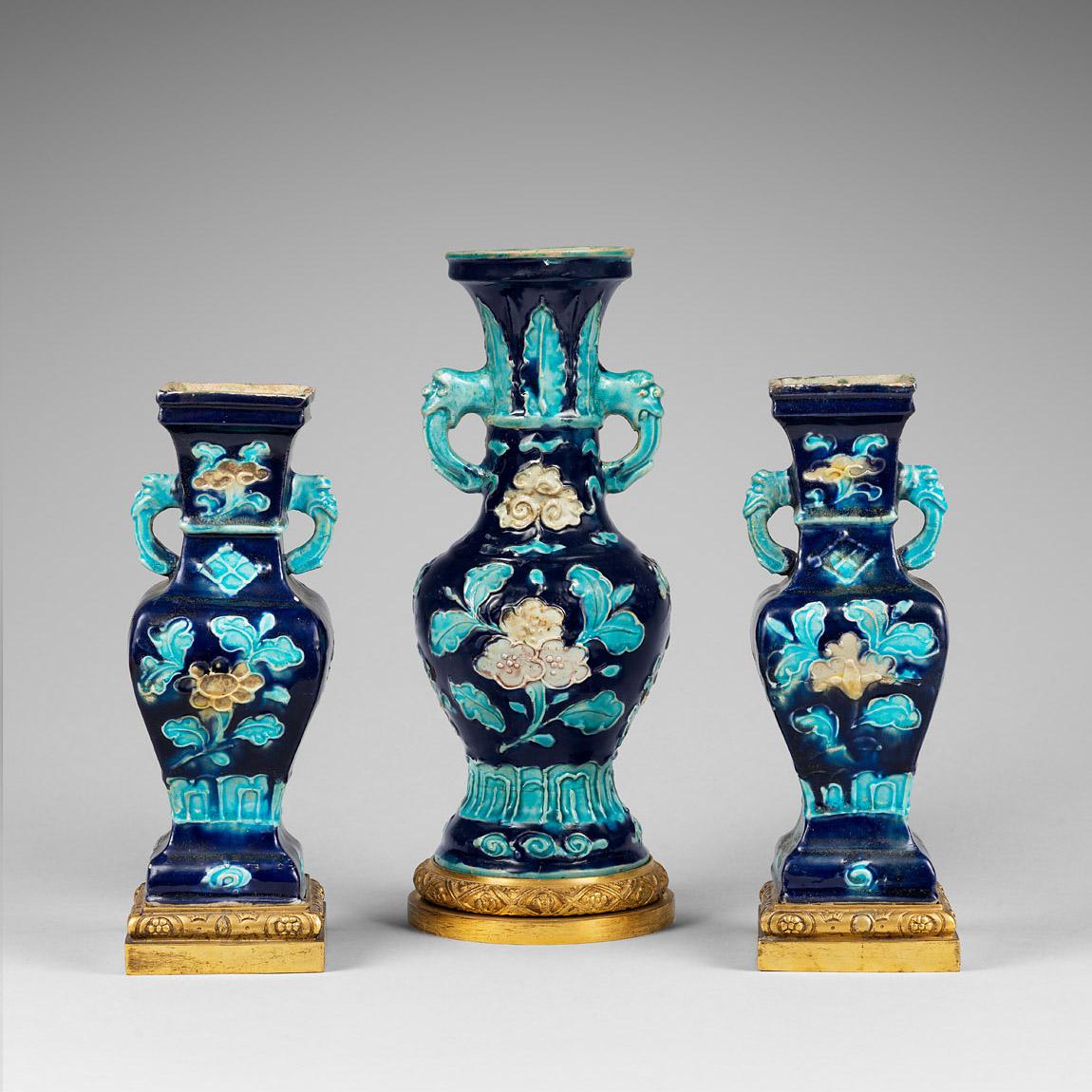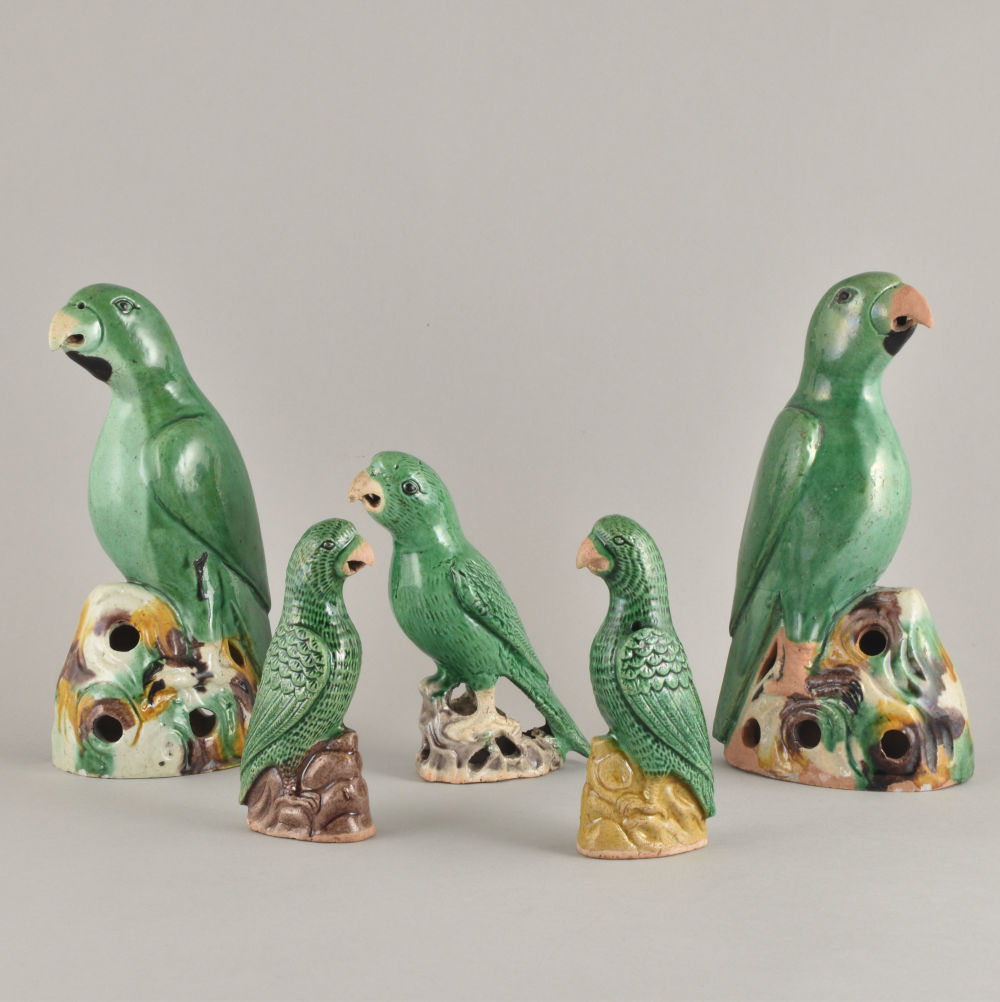
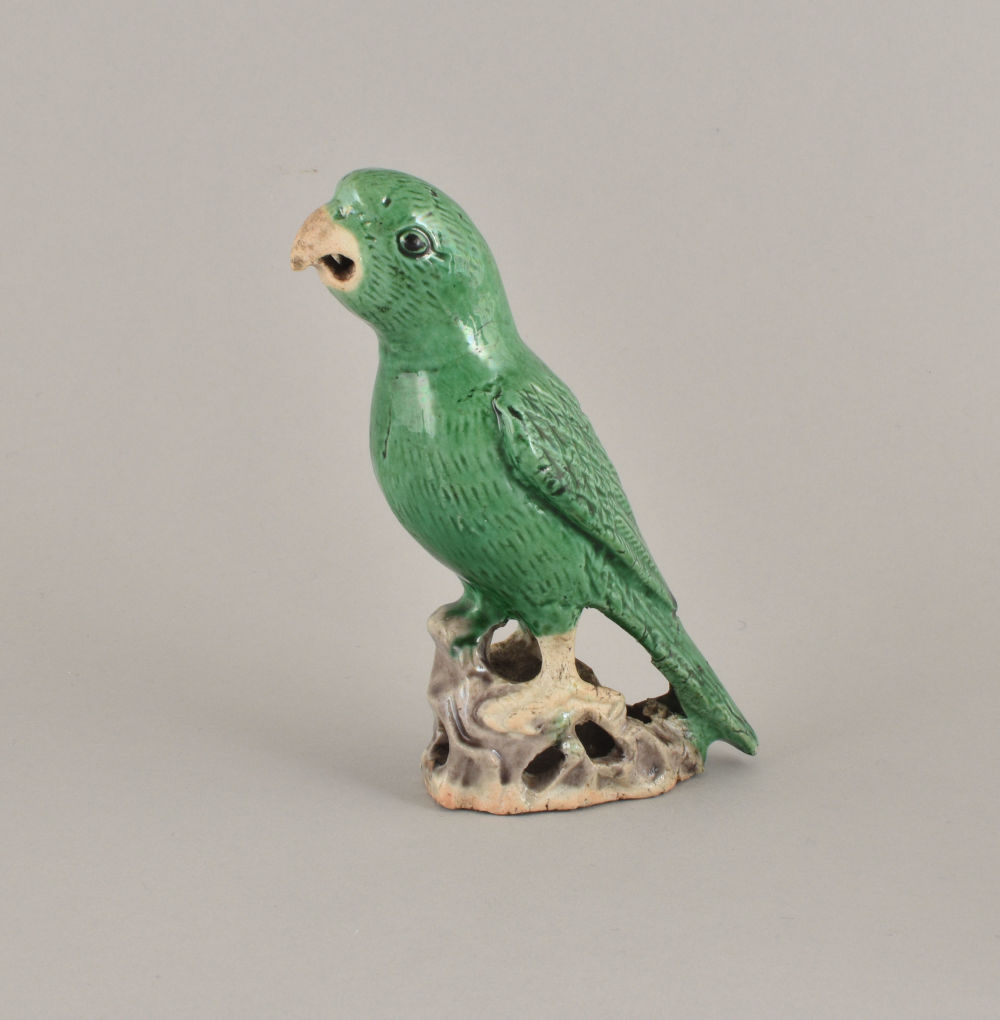
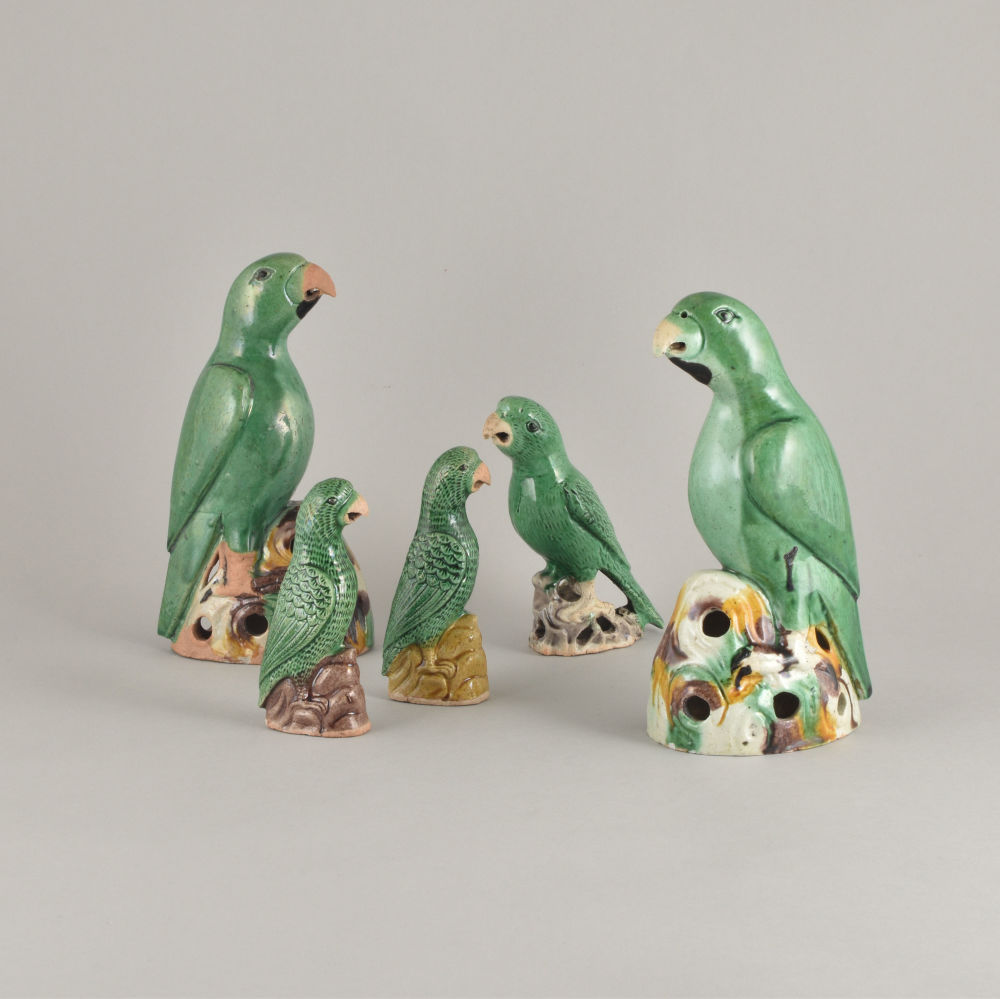
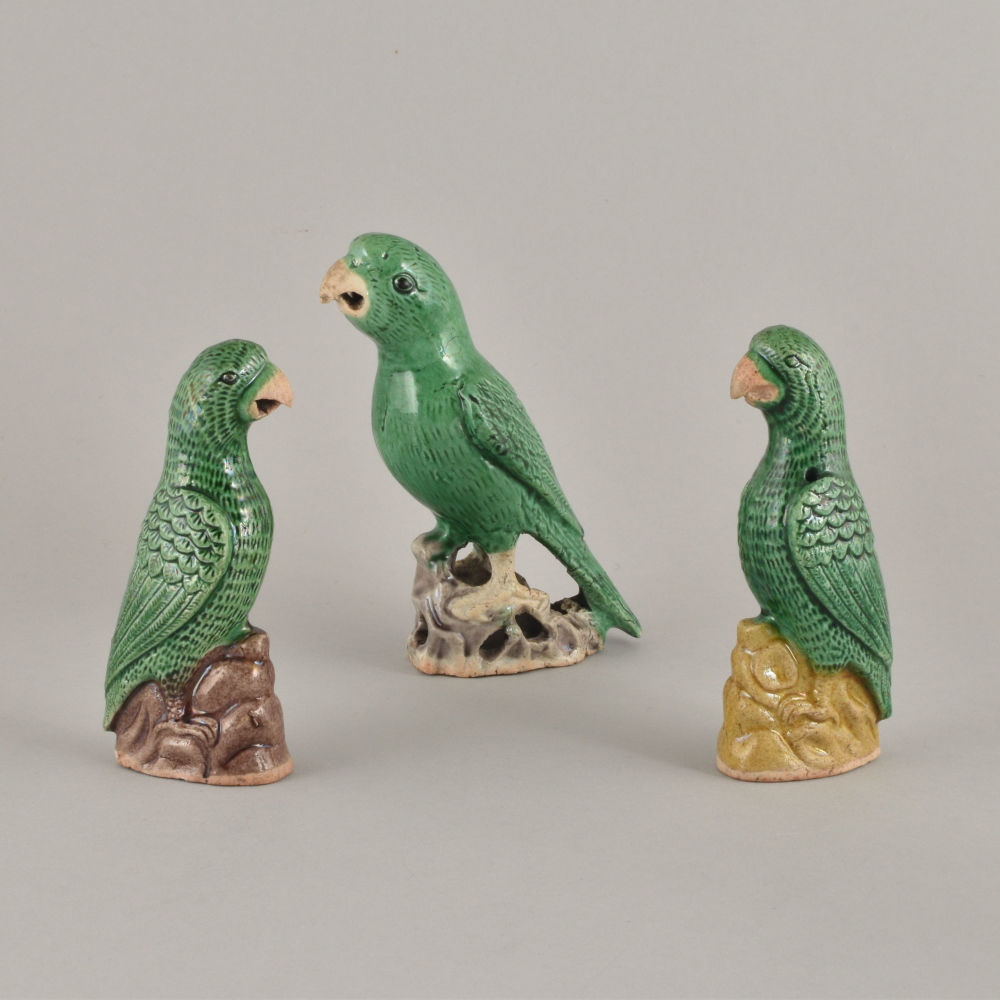
Five figures of parrots decorated with famille verte enamels on the biscuit. Kangxi period
Naturalistically moulded in two halves, perched on a pierced rock work base and with folded wings, heads turned slightly to the right or the left, the beaks open. The body are decorated with shades of green enamel and the eyes are pencilled in black, while the claws and beak are left in the biscuit. The hollow rockwork base is painted in the “egg-and-spinach” pattern for the largest figures, in manganese or yellow enamels for the smaller.
- Country:
- China
- Period :
- Kangxi (1662-1722)
- Material:
- Porcelain (biscuit)
- Dimension:
- 7.08 in. (18 cm, the higher)
- Reference :
- C724
- Status:
- sold
Related works
A figure of a parrot (with an unusual yellow base) was published by Jorge Welsh in Biscuit: Refined Chinese Famille Verte Wares, Jorge Welsh Books, London and Lisbon, October, 2012, no. 54.
Miniatures parrots were published by Anne-Claire Schumacher in La donation Clare van Beusekom-Hamburger : Faïences et porcelaines des XVIe-XVIIIe siècles, 2010, no. 48.
Early figures of famille verte parrots are also illustrated by J. Ayers in Chinese Works of Art in the Collection of Her Majesty the Queen, London, 2016, vol. I, no. 540-541.
Among early examples are those mounted in gilt bronze as part of chandeliers which were installed royal European castles, at the palace of Versailles. Examples were also found in the porcelain room of Charlottenburg, or in the inventory of the Dresden Collection of August the Strong in 1700.
Examples from the Peabody Essex Museum are also illustrated by William Sargent in The Copeland Collection: Chinese and Japanese Ceramic Figures, 1991, no. 37/38.
Notice
In China, parrots are found in the wild in the warmer southern provinces. Other birds of the same genus such as macaws, cockatoos and parakeets, were imported and kept as caged bird in China for thousands years. In the Tang dynasty (618-907), exotic birds were brought to the imperial court from Indochina and Indonesia. Emperor Xuanzong adopted a talking parrot as a pet and Emperor Taizong commissioned a rhapsody to be written about his own prized parrot.
They have fascinated Europeans, as the exotic birds themselves were introduced as domestic pets during the lat fifteenth and early sixteenth century, living curiosities acquired during the explorations of Asia and America. Parrots were much admired for their colorful plumage, their art of mimicry and their longevity. Parrots were depicted in the still-life paintings of the seventeenth century, along with underglaze blue porcelains and exotic fruits from China and others ports.
During Kangxi reign (1662-1722), parrot depicted in various colors of porcelain, were popular in the West because of their vibrant and exotic appearance. During the 18th century, the taste for parrots was further encouraged by the fashion for exotic orientalist, when having live parrots was also popular. Models of small parrots ere found in the VOC wreck Oosterland which sank in 1697.

